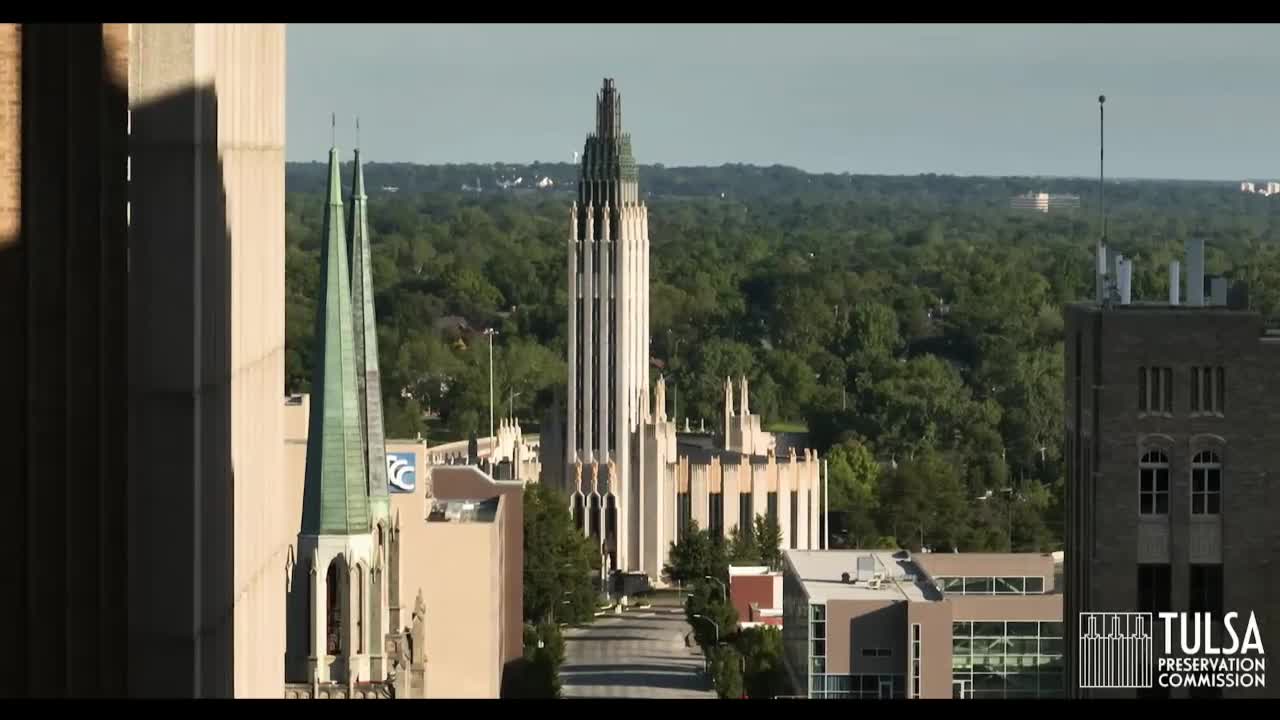Tulsa's Cathedral District Showcases Historic Churches of Faith and Architectural Significance
August 14, 2025 | Tulsa, Tulsa County, Oklahoma
This article was created by AI summarizing key points discussed. AI makes mistakes, so for full details and context, please refer to the video of the full meeting. Please report any errors so we can fix them. Report an error »

In a recent exploration of Tulsa's architectural heritage, the spotlight was cast on three iconic churches that embody the city's rich history and cultural identity. These sacred spaces not only serve as places of worship but also as testaments to the community's faith and artistic ambition.
The first highlight is the Boston Avenue Methodist Church, recognized as a national landmark of Art Deco architecture. Completed in 1929, this church stands out with its vertical lines and abstract ornamentation, designed by architect Bruce Goff and artist Ada Robinson. Its innovative design merges modernism with reverence, making it one of the most significant Art Deco churches in the United States.
Next, the Holy Family Cathedral serves as the spiritual heart of Tulsa's Catholic community. Built in 1914 in a neoclassical style, the cathedral features impressive masonry walls and steel-framed spires, with a main spire reaching 251 feet tall, adorned with four large clocks. This cathedral not only represents a place of worship but also acts as a cornerstone of Tulsa's historical narrative.
Lastly, the First Methodist Church, located at the corner of Eleventh and Boulder, has a congregation that dates back to 1886. Initially starting with a modest white chapel, the church has evolved alongside the city, culminating in the construction of its current grand structure in 1921. Designed in the perpendicular Tudor Gothic style, the church's pointed arches and vaulted ceilings reflect a deep sense of reverence and tradition.
These churches collectively illustrate that Tulsa's history is not solely defined by industry and growth but is also deeply rooted in faith, artistry, and community. As the city continues to evolve, these sacred spaces remain vital links to its past, reminding residents and visitors alike of the enduring power of belief and community spirit.
The first highlight is the Boston Avenue Methodist Church, recognized as a national landmark of Art Deco architecture. Completed in 1929, this church stands out with its vertical lines and abstract ornamentation, designed by architect Bruce Goff and artist Ada Robinson. Its innovative design merges modernism with reverence, making it one of the most significant Art Deco churches in the United States.
Next, the Holy Family Cathedral serves as the spiritual heart of Tulsa's Catholic community. Built in 1914 in a neoclassical style, the cathedral features impressive masonry walls and steel-framed spires, with a main spire reaching 251 feet tall, adorned with four large clocks. This cathedral not only represents a place of worship but also acts as a cornerstone of Tulsa's historical narrative.
Lastly, the First Methodist Church, located at the corner of Eleventh and Boulder, has a congregation that dates back to 1886. Initially starting with a modest white chapel, the church has evolved alongside the city, culminating in the construction of its current grand structure in 1921. Designed in the perpendicular Tudor Gothic style, the church's pointed arches and vaulted ceilings reflect a deep sense of reverence and tradition.
These churches collectively illustrate that Tulsa's history is not solely defined by industry and growth but is also deeply rooted in faith, artistry, and community. As the city continues to evolve, these sacred spaces remain vital links to its past, reminding residents and visitors alike of the enduring power of belief and community spirit.
View full meeting
This article is based on a recent meeting—watch the full video and explore the complete transcript for deeper insights into the discussion.
View full meeting
